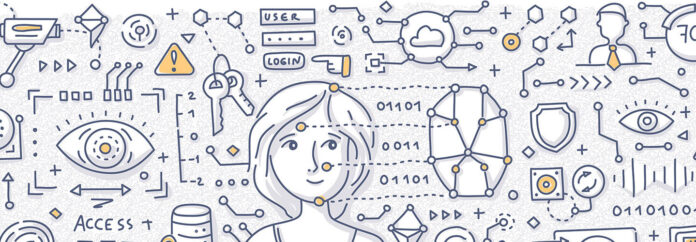
AI software captures students’ physical and behavioral data and alerts them when they aren’t paying attention.
Biometrics — technology that captures physical and behavioral data — is being used by several universities to collect data on students’ attention. For example, for its remote learning classes, the Paris School of Business is using software called Nestor to track students’ eye movement and facial expressions through their laptop webcams. Artificial intelligence software analyzes this data and alerts students when their interest starts to fade; it also creates custom quizzes based on students’ attentiveness.
Biometrics could also work in K–12 classrooms. It’s the natural next step in the move toward personalized learning, in which technology tailors information and lessons to fit students’ knowledge and abilities.
Ryan Baker, an associate professor at the University of Pennsylvania’s Graduate School of Educationand director of the Penn Center for Learning Analytics, has been studying the effects of machine-human interaction on education for years.
“Biometrics could be very useful to determine engagement and emotion,” says Baker. “It can help teachers tell when students are shifting from being confused to being frustrated, so they can change tactics. There are a lot of strategies that teachers can use if they know the emotions of students.”
Privacy Concerns Create Barriers to K–12 Biometrics
There’s controversy about whether gathering personal data on children is ethical or effective. In 2012, a Gates Foundation donation to study a biometric tool caused a backlash among educators, parents and political pundits who considered this type of data collection to be intrusive.
“If a school is collecting facial recognition data, you have to know how it’s being used by the school as well as by the technology’s provider,” Attai says. “A school might use data to optimize the best times for individual students to study. But it could also use that same data to hold students back who aren’t studying enough.”
Attai recommends that any technology that collects personal data on students should be implemented thoughtfully, and that administrators should establish policies that govern how the data will be used, protected and anonymized if necessary.
Despite this complexity, biometric technology may enter K–12 classrooms in the next five to 10 years. Various research studies have shown the benefits of analyzing the interaction between students and technology, particularly when the technology provides educators with information about students’ emotions.
Baker maintains that if schools can overcome the political and security challenges, students and teachers will benefit.
Analysis:
Biometric technology might be in interesting way to minimize the physical barriers between student and teacher in the virtual learning environment. This article highlights the positive benefits of biometrics as well as the negative ones. Biometrics would be useful to helping teachers tailor lessons to fit students’ knowledge and abilities. It also could alert teachers when students are confused or frustrated. The online learning atmosphere would be an excellent opportunity for biometric tech to swoop in, as teachers are less likely to notice these attitude shifts that they would otherwise recognize in-person. On the other hand, biometrics also creates controversy about whether gathering personal info on children is ethical or not. While its definitely a futuristic solution to making sure students are paying attention in online school, biometrics is interesting to consider.
Source: https://edtechmagazine.com/k12/article/2018/02/biometric-technology-tracks-students-attention



